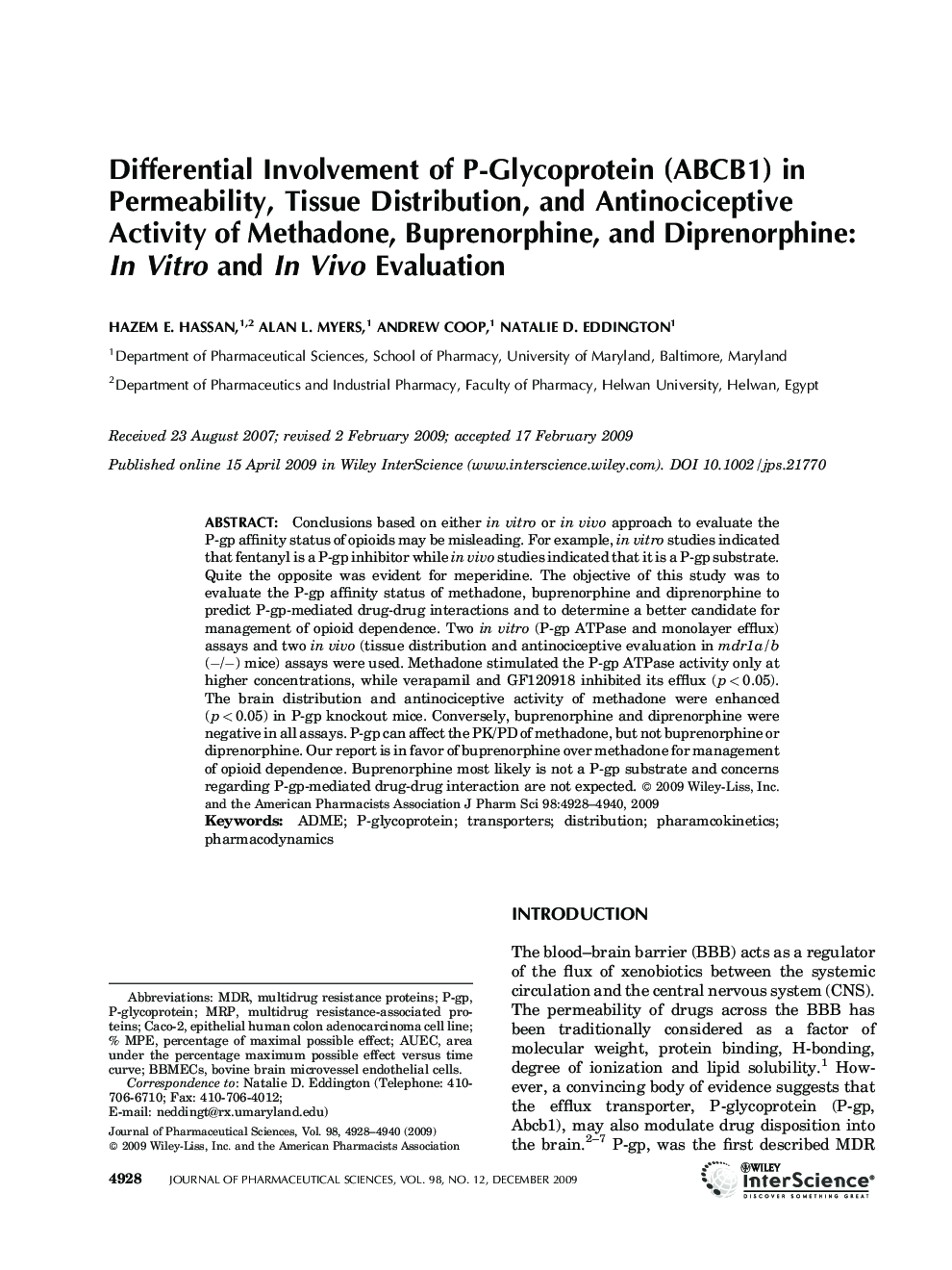| Article ID | Journal | Published Year | Pages | File Type |
|---|---|---|---|---|
| 2486598 | Journal of Pharmaceutical Sciences | 2009 | 13 Pages |
Abstract
Conclusions based on either in vitro or in vivo approach to evaluate the P-gp affinity status of opioids may be misleading. For example, in vitro studies indicated that fentanyl is a P-gp inhibitor while in vivo studies indicated that it is a P-gp substrate. Quite the opposite was evident for meperidine. The objective of this study was to evaluate the P-gp affinity status of methadone, buprenorphine and diprenorphine to predict P-gp-mediated drug-drug interactions and to determine a better candidate for management of opioid dependence. Two in vitro (P-gp ATPase and monolayer efflux) assays and two in vivo (tissue distribution and antinociceptive evaluation in mdr1a/b (â/â) mice) assays were used. Methadone stimulated the P-gp ATPase activity only at higher concentrations, while verapamil and GF120918 inhibited its efflux (p < 0.05). The brain distribution and antinociceptive activity of methadone were enhanced (p < 0.05) in P-gp knockout mice. Conversely, buprenorphine and diprenorphine were negative in all assays. P-gp can affect the PK/PD of methadone, but not buprenorphine or diprenorphine. Our report is in favor of buprenorphine over methadone for management of opioid dependence. Buprenorphine most likely is not a P-gp substrate and concerns regarding P-gp-mediated drug-drug interaction are not expected. © 2009 Wiley-Liss, Inc. and the American Pharmacists Association J Pharm Sci 98:4928-4940, 2009
Related Topics
Health Sciences
Pharmacology, Toxicology and Pharmaceutical Science
Drug Discovery
Authors
Hazem E. Hassan, Alan L. Myers, Andrew Coop, Natalie D. Eddington,
